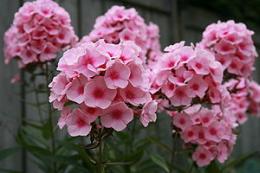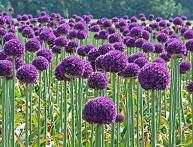Planting phloxes and caring for them

Phlox can decorate any flower bed and are very loved by gardeners. Their lush inflorescences and delicate aroma delight even experienced gardeners. The homeland of these herbaceous perennials is North America, where there are no severe frosts, however, they sometimes withstand even Siberian winters. Yet planting phlox and caring for them must be carried out taking into account their characteristics. Firstly, phloxes need to be planted in places protected from the wind; in summer they retain moisture well, and in winter a lot of snow accumulates. Snow protects these flowers from freezing; they often die not in the harshest winters, but in the least snowy ones.
Secondly, phloxes with red flowers fade in the sun, so it is better to plant them in a place where during the hottest time of the day they will find themselves in the shade of some trees or bushes. They tolerate partial shade well, but flowering will be less lush. Phlox are unpretentious and can grow in any soil, but they prefer loose loamylike in their homeland. The roots of this plant are compact, so it is enough to dig up the soil 30-40 centimeters before planting. In the fall you need to add compost, ash and mineral fertilizers. If the soil is heavy clay, add river sand to it, and if it is sandy, add dry powdered clay, otherwise the phlox will die in extreme heat.
The plant propagates by dividing the bush, root suckers, cuttings, layering, and seeds. They will easily tolerate transplantation with a clod of soil even during the flowering period.In general, planting phlox and caring for them does not present any difficulties. They are usually planted in spring or autumn, but they can also be planted in summer. Should weed, loosen, add humus, feed in spring with urea, in summer - with nitrophoska, at the end of flowering - with ash. Plants do not tolerate drought well; they need to be watered regularly, preferably in the evening in hot weather.








